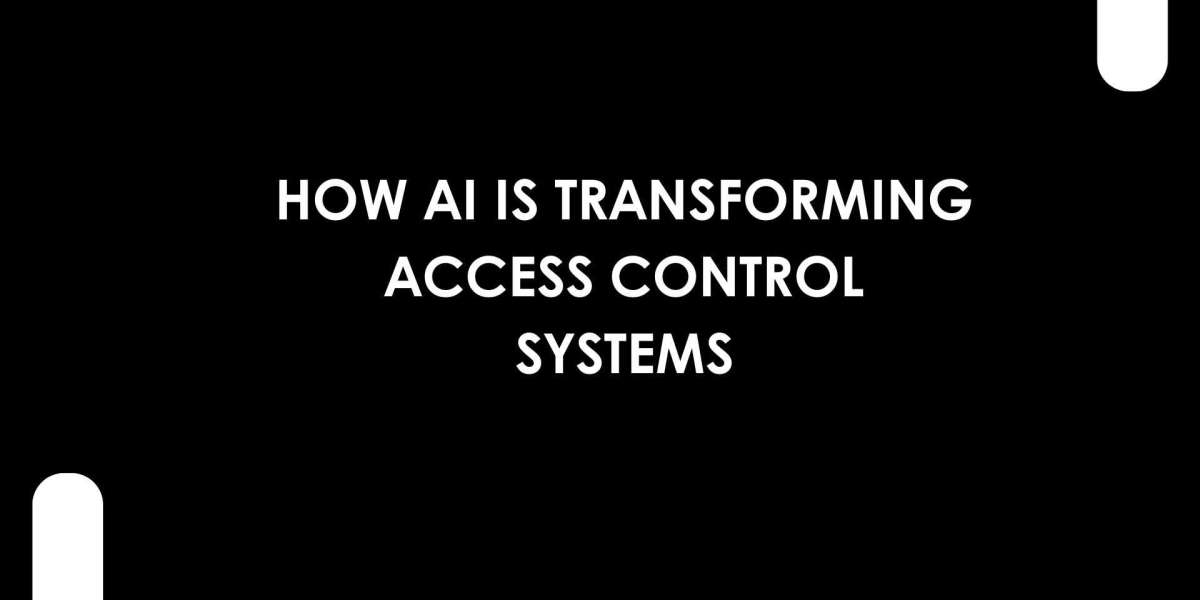In an era of rapid digital transformation, businesses are increasingly turning to artificial intelligence to improve operations, security, and decision-making. One of the most notable changes is happening in the world of security technology. AI is reshaping how we manage physical spaces, identities, and movement. At the heart of this transformation is the Access Control System, now powered by intelligent algorithms and real-time data processing.
At XTEN-AV, we believe in harnessing the full potential of AI to deliver cutting-edge solutions that redefine how businesses approach AV and security. By integrating AI into the Access Control System, we are witnessing smarter, faster, and more secure environments that adapt to modern needs. In this blog, we explore how AI is revolutionizing access control and what it means for the future of security.
The Traditional Access Control System
Traditionally, an Access Control System relied on basic authentication methods such as keycards, PIN codes, or manual identification. These systems were rule-based and rigid. While they served the purpose of limiting physical access, they lacked adaptability, contextual awareness, and the ability to detect evolving threats.
Management of such systems often required manual oversight, periodic audits, and reactive problem-solving. In many cases, these systems could not distinguish between normal behavior and suspicious activity. That is where AI is stepping in to change the game.
The Rise of AI in Access Control
Artificial intelligence brings learning, automation, and predictive capabilities to access control. Rather than just granting or denying entry, AI-driven systems analyze behavior, patterns, and real-time data to make smarter decisions.
An AI-enhanced Access Control System can monitor thousands of events across multiple locations and make intelligent judgments based on historical trends and current activity. This dynamic decision-making process leads to a higher level of security, greater efficiency, and better user experience.
Key Ways AI Is Transforming Access Control Systems
1. Facial Recognition and Biometric Intelligence
AI-powered facial recognition is becoming a cornerstone of modern access control. Unlike traditional methods, facial recognition offers hands-free, seamless entry while reducing the risk of unauthorized access through lost or stolen credentials.
Advanced AI algorithms can identify individuals even under challenging conditions, such as poor lighting, different angles, or partial obstructions. The Access Control System becomes more accurate and secure, reducing reliance on physical tokens or cards.
Some systems also incorporate multi-factor authentication using voice, fingerprint, or behavioral biometrics, all enhanced by AI to reduce false positives and ensure legitimate access.
2. Behavioral Analysis and Anomaly Detection
AI can study patterns of behavior over time, learning what normal access activity looks like for every user. If someone attempts to access an area at an unusual time or from a different location, the system can flag it as suspicious.
This level of behavioral analysis turns a static Access Control System into a dynamic, responsive security tool. The system learns and adapts, identifying potential threats before they escalate.
For example, if an employee who usually works in one building attempts to access a high-security zone in another location, the system can automatically trigger an alert or temporarily deny access until further verification is completed.
3. Real-Time Decision Making
AI enhances access control by making real-time decisions based on context. If a building is under lockdown or an emergency event occurs, the system can adjust access permissions instantly.
AI can also integrate data from weather alerts, traffic feeds, or IoT sensors to support more informed decision-making. This makes your Access Control System smarter and more responsive to changing conditions.
4. Automated Visitor Management
Managing visitors, contractors, or temporary staff manually can be inefficient and prone to errors. AI automates the process by pre-registering guests, assigning temporary access credentials, and validating identities through facial recognition or QR codes.
The Access Control System ensures visitors only access designated areas and logs every movement, all without burdening reception staff or delaying entry.
5. Data-Driven Insights and Reporting
AI processes vast amounts of data and extracts meaningful insights. Businesses can use these insights to optimize building usage, identify bottlenecks, and improve safety protocols.
For example, reports can show which doors are most used, which employees work late, or where suspicious patterns are forming. The Access Control System evolves into a strategic tool for operational planning and compliance.
6. Integration with Surveillance and AV Systems
AI allows your Access Control System to seamlessly integrate with surveillance cameras, AV controls, alarm systems, and IoT devices. This unified approach means that an access breach can trigger camera recording, send a notification, and even lock down specific zones.
XTEN-AV specializes in delivering such integrated experiences where access, communication, and automation work in harmony. AI brings intelligence to every touchpoint, offering centralized control over your entire infrastructure.
Benefits of AI-Driven Access Control
Enhanced Security: Continuous learning and anomaly detection provide proactive threat management
Greater Efficiency: Automation reduces manual workloads and eliminates human error
Scalability: Systems grow easily with your business without sacrificing performance
Improved User Experience: Frictionless authentication methods such as face or mobile recognition simplify access
Cost Savings: Less hardware maintenance, fewer false alarms, and optimized workflows mean lower operational costs
The Future of Access Control
The future of access control is intelligent, intuitive, and interconnected. AI is setting the foundation for smart buildings where access decisions are no longer just binary but contextual and adaptive.
As AI continues to evolve, we can expect even more advanced features such as emotion recognition, AI-assisted emergency response, and deep integration with enterprise-level applications. Your Access Control System will not just secure the premises but enhance how people interact with spaces.
Final Thoughts
AI is not just improving access control. It is redefining it. By combining advanced algorithms with real-time analytics, AI turns traditional security systems into intelligent platforms that understand and adapt to human behavior.
At XTEN-AV, we are proud to be at the forefront of this transformation. By helping businesses deploy AI-powered solutions, we ensure that security is no longer a barrier but a foundation for productivity and innovation. An AI-enhanced Access Control System is more than a safety measure. It is a strategic advantage for forward-thinking organizations.








